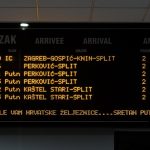With a few exceptions, towns and municipalities near or at the coast are substantially richer than the ones in inland areas.
In general, Croatian municipalities and towns closer to the coast are richer than the ones in inland areas. Of the 50 municipalities in Croatia with the highest local budget revenues per capita, all are located in the Adriatic area, announced the Institute of Public Finances which analyzed data on revenues and expenditures of 428 Croatian municipalities, 128 towns and 20 counties in the past year, reports Novi List on December 8, 2016.
As we head towards the inland areas and Slavonia, local government units are poorer, with the exception of the Zagreb region and some larger towns. Out of 100 poorest municipalities, 30 percent of them are located in Slavonski Brod-Posavina County and Vukovar-Srijem County. None of the 100 municipalities with the lowest revenues per capita are located in Istria County, Primorje-Gorski Kotar County, Lika-Senj County and Šibenik-Knin County, according to authors of the study Katarina Ott, Mihaela Bronić and Branko Stanić.
Differences in revenues between municipalities are huge. The richest one in 2015 was the municipality of Janjina on the Pelješac Peninsula, with 21,756 kuna of revenues per capita, followed by Vir (19,987 kuna) and Baška (16,938 kuna). The thirty poorest municipalities together have the revenues equal to one of the three with the largest budgets, which are Konavle, Vir and Medulin, each with a municipal budget of about 60 million kuna. Average revenues per capita in municipalities stand at 3,328 kuna, and two-thirds of municipalities are below that average. The four poorest municipalities – Sikirevci, Strizivojna, Mače and Pojezerje – have local budgets of less than 1,000 kuna per capita.
Similar trends exist among Croatian towns. Of the 20 richest towns – from Biograd (6,331 kuna) to Mali Lošinj (11,211 kuna) – they are all located along the coast, with the exception of Vrlika and Zagreb. Of the 18 poorest towns, which have revenues below 2,000 kuna per capita, all are located inland.
It seems that the differences between coastal and inland areas are increasing. In 2014, four towns from inland areas were ranked among the 20 richest in Croatia. Last year, there were just two such towns – Zagreb and Vrlika, with Lipik and Pazin falling out of the top 20. Two years ago, the municipality of Plitvice Lakes was among the 20 richest municipalities in Croatia, but a year later its revenues were halved, so now it is not even among the top 50 municipalities, which are now all located in the Adriatic part of Croatia.
While towns and municipalities along the coast generally have higher revenues, in almost all local government units in Gorski Kotar region the revenues have fallen in the last year, with the exception of Čabar. Even in the richest municipality in the region, Fužine – which used to have per capita revenues higher than Zagreb – revenues have fallen from 8,101 to 7,602 kuna.








